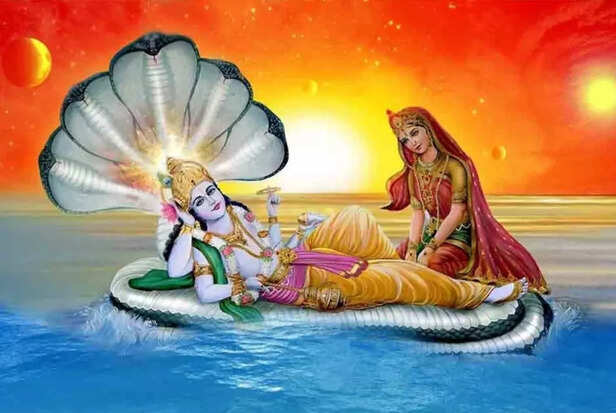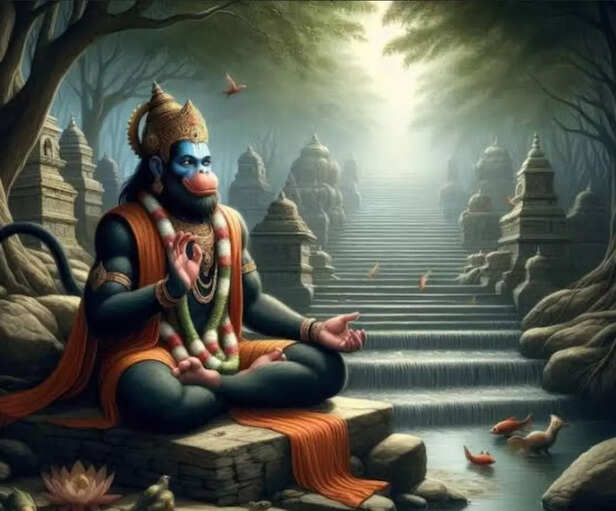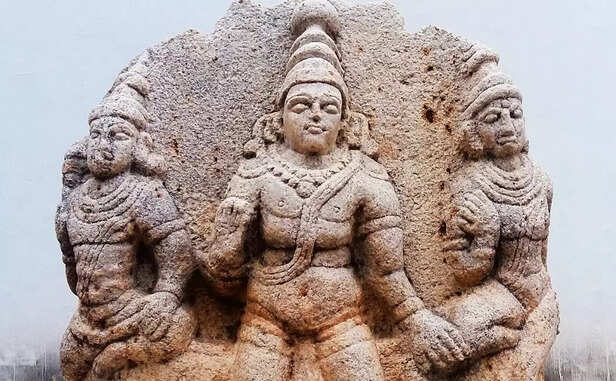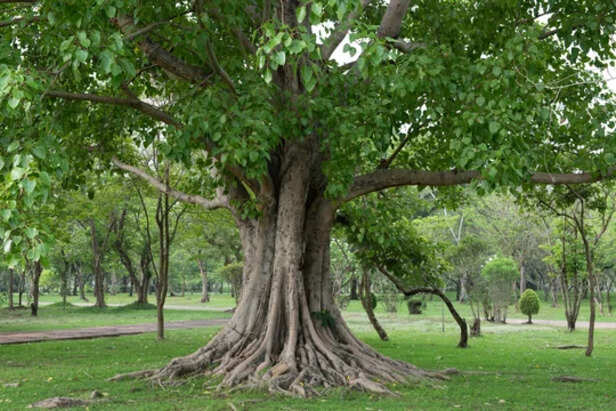Why Wedding Invitations Are First Sent to Gods, Ancestors, and Guardians?
Ankit Gupta | Apr 26, 2025, 11:04 IST
( Image credit : Timeslife )
The profound Hindu tradition of offering the first wedding invitations to divine forces—Lord Ganesha, Vishnu-Lakshmi, Hanuman, Kuldevi/Kuldevta, and ancestors. It unveils the spiritual significance behind each ritual and why honoring the unseen guests ensures a blessed and obstacle-free marriage.
A Hindu wedding is not merely a social contract; it is a cosmic event. It is a ritual that weaves together not just two souls, but two families, two bloodlines, and two destinies. In such a deeply spiritual and cultural framework, even before the first human guest receives a wedding card, invitations are silently sent to beings who reside beyond the reach of our physical senses—divine forces, ancestral spirits, and family guardians. These invisible yet eternally present forces are believed to oversee the sanctity and success of the marriage. Let us journey through the sacred sequence of the first five invitations, often delivered not with paper and ink but with reverence and ritual.
In contemporary weddings, we obsess over the design of invitations, the fonts, the color themes, and the RSVP etiquette. But in ancient Sanatan traditions, the very first invitations are not printed. They are offered. They are spoken, sung, and placed with care—either at altars, under sacred trees, in temples, or on the earth itself. Why?
Because the wedding, according to Hindu dharma, is not just for the living. It is a yajna, a sacred offering, and it must include all those who sustain the circle of life—deities, departed ancestors, and kuladevatas (clan deities). Ignoring this protocol is not just considered disrespectful—it is believed to invite misfortune, instability, and spiritual dissonance in the marriage.

Before any ritual, before even choosing the date and time of the wedding, the first name that is uttered is Lord Ganesha's. Known as Vighnaharta (Remover of Obstacles), Ganesha is not just a god of beginnings; he is the sentinel who ensures that every sacred ceremony proceeds without hindrance.
In many households, a small clay or silver idol of Ganesha is washed, decorated with sandalwood paste and flowers, and then invoked with the chanting of mantras. The wedding invitation—either symbolic or actual—is placed before Him. This is more than just a gesture; it is a declaration: “Please be the first to arrive. Be the guardian of our joy. Remove all hindrances before we begin.”
This step reflects the deep psychological wisdom of Hindu tradition. No great undertaking should begin without first clearing the mind, the path, and the karmic clutter. And Ganesha, with his elephant head symbolizing wisdom and strength, ensures just that.

Once the path is cleared, the next invitation goes to the presiding deities of marital dharma—Lord Vishnu and Goddess Lakshmi. Vishnu, as the sustainer of the universe, symbolizes stability, righteousness, and the order that keeps relationships intact. Lakshmi represents material abundance, emotional wealth, and household harmony.
Their presence in a wedding is crucial not just for prosperity, but for the inner wealth of compassion, discipline, and spiritual alignment between the couple.
In many South Indian and Vaishnava households, the invitation is offered at Vishnu or Lakshmi temples, often accompanied by a vow or donation. In other traditions, a yellow cloth representing Lakshmi and a tulsi (holy basil) leaf representing Vishnu are placed at the altar. The couple is seen as Lakshmi-Narayana, and their union as a living embodiment of the divine consortship.
Inviting them ensures that the marriage is not just filled with riches but anchored in dharma.

Hanuman is not just the most powerful devotee of Lord Rama—he is also the most potent protector of righteousness, loyalty, and unseen warfare. It is believed that no evil spirit, curse, or negative planetary alignment can withstand the presence of Hanuman.
The third invitation, therefore, is sent to Hanumanji—often by visiting a Hanuman temple or tying a sacred thread (mouli) near His idol. Many families read the Sundarkand or recite the Hanuman Chalisa in the days leading up to the wedding to spiritually fortify the environment.
In Tantra, Hanuman is seen as the master of Ucchatana—removal of negative energies and influences. In astrology, He is believed to pacify Saturn (Shani), whose adverse placement can delay or disrupt marriages.
Therefore, invoking Hanuman is invoking divine vigilance. He becomes the invisible sentinel, ensuring that no evil eye or jealous heart can disrupt the sacred union.

Every family in Hindu tradition has a Kuldevi (family goddess) or Kuldevta (family god)—a guardian deity who watches over the lineage. This deity is not chosen; it is inherited. Sometimes the Kuldevi is a fierce form like Durga or Bhavani; sometimes a benevolent form like Annapurna or Gopal Krishna.
The fourth invitation is offered to this deity. In some traditions, it is sent by mail to the family temple in the ancestral village. In others, the family undertakes a pilgrimage before the wedding and offers the card at the deity’s shrine.
Why is this so important?
Because marriage is not the union of just two individuals—it is a continuation of the gotra, the lineage, the karmic heritage. The Kuldevi or Kuldevta is seen as the spiritual matrix of that heritage. Ignoring this step is akin to ignoring the roots while planting a new branch.
Inviting them brings protection, continuity, and ancestral grace into the new chapter.

Perhaps the most touching of all is the fifth invitation—offered not to a god, but to those who once walked this earth in your bloodline. The invitation to the Pitrs, the ancestors, is often placed under a Peepal tree or near a banyan, which are considered sacred abodes of ancestral spirits.
Sometimes, this is done with rice, sesame seeds, and water—traditional offerings for the departed. The wedding card is placed under the tree or buried in the soil with prayers that the blessings of the departed flow toward the union.
In Hindu belief, the Pitrs are ever-watchful. If displeased or forgotten, they can cause Pitr Dosh—ancestral karmic imbalance that can manifest as delays in marriage, financial instability, or health issues. By inviting them, one aligns with the lineage and dissolves these subtle karmic blockages.
This step is more than ritual. It is emotional closure. It is saying, “We remember you. We honor you. Please come bless us, even if only in spirit.”
Before a single human guest is invited, before the caterers and decorators are booked, before the music playlist is made—this sacred sequence of five invitations completes a circle of spiritual protocol. It’s a circle where the gods are first guests, the protectors are first guards, and the ancestors are first witnesses.
These invitations are not social formalities. They are energetic alignments. They create a subtle but powerful field of grace around the marriage.
In the fast-paced world of digital invites and destination weddings, it is easy to forget these timeless steps. But for those who follow them, something inexplicable is felt—a spiritual confidence, a sense that the heavens are watching and blessing.
A wedding is not just a union—it is a yajna, a sacred fire. And before the worldly crowd gathers around it, the divine must arrive. Ganesha must open the door. Vishnu and Lakshmi must sanctify the hall. Hanuman must guard the threshold. The Kuldevi must bestow her grace. The ancestors must whisper their blessings.
Only then should the first human hand be extended.
Because in Sanatan Dharma, the visible is always the last to arrive. The invisible—the subtle, the sacred, the silent—comes first. That is what makes it timeless.
The Unseen Guest List—Beyond Paper and Print
Because the wedding, according to Hindu dharma, is not just for the living. It is a yajna, a sacred offering, and it must include all those who sustain the circle of life—deities, departed ancestors, and kuladevatas (clan deities). Ignoring this protocol is not just considered disrespectful—it is believed to invite misfortune, instability, and spiritual dissonance in the marriage.
The First Invitation – Lord Ganesha: The Remover of All Obstacles

Wedding Invitation
( Image credit : Timeslife )
Before any ritual, before even choosing the date and time of the wedding, the first name that is uttered is Lord Ganesha's. Known as Vighnaharta (Remover of Obstacles), Ganesha is not just a god of beginnings; he is the sentinel who ensures that every sacred ceremony proceeds without hindrance.
In many households, a small clay or silver idol of Ganesha is washed, decorated with sandalwood paste and flowers, and then invoked with the chanting of mantras. The wedding invitation—either symbolic or actual—is placed before Him. This is more than just a gesture; it is a declaration: “Please be the first to arrive. Be the guardian of our joy. Remove all hindrances before we begin.”
This step reflects the deep psychological wisdom of Hindu tradition. No great undertaking should begin without first clearing the mind, the path, and the karmic clutter. And Ganesha, with his elephant head symbolizing wisdom and strength, ensures just that.
The Second Invitation – Lord Vishnu and Goddess Lakshmi: Anchoring Dharma and Prosperity

Divine Semblance
( Image credit : Timeslife )
Once the path is cleared, the next invitation goes to the presiding deities of marital dharma—Lord Vishnu and Goddess Lakshmi. Vishnu, as the sustainer of the universe, symbolizes stability, righteousness, and the order that keeps relationships intact. Lakshmi represents material abundance, emotional wealth, and household harmony.
Their presence in a wedding is crucial not just for prosperity, but for the inner wealth of compassion, discipline, and spiritual alignment between the couple.
In many South Indian and Vaishnava households, the invitation is offered at Vishnu or Lakshmi temples, often accompanied by a vow or donation. In other traditions, a yellow cloth representing Lakshmi and a tulsi (holy basil) leaf representing Vishnu are placed at the altar. The couple is seen as Lakshmi-Narayana, and their union as a living embodiment of the divine consortship.
Inviting them ensures that the marriage is not just filled with riches but anchored in dharma.
The Third Invitation – Hanumanji: The Shield Against Dark Forces

Lord Hanuman
( Image credit : Timeslife )
Hanuman is not just the most powerful devotee of Lord Rama—he is also the most potent protector of righteousness, loyalty, and unseen warfare. It is believed that no evil spirit, curse, or negative planetary alignment can withstand the presence of Hanuman.
The third invitation, therefore, is sent to Hanumanji—often by visiting a Hanuman temple or tying a sacred thread (mouli) near His idol. Many families read the Sundarkand or recite the Hanuman Chalisa in the days leading up to the wedding to spiritually fortify the environment.
In Tantra, Hanuman is seen as the master of Ucchatana—removal of negative energies and influences. In astrology, He is believed to pacify Saturn (Shani), whose adverse placement can delay or disrupt marriages.
Therefore, invoking Hanuman is invoking divine vigilance. He becomes the invisible sentinel, ensuring that no evil eye or jealous heart can disrupt the sacred union.
The Fourth Invitation – Kuldevi or Kuldevta: Guardians of the Bloodline

Madurai Veeran with his consorts, a kuladevata of communities in Madurai (Credit: Wikipedia)
( Image credit : Timeslife )
Every family in Hindu tradition has a Kuldevi (family goddess) or Kuldevta (family god)—a guardian deity who watches over the lineage. This deity is not chosen; it is inherited. Sometimes the Kuldevi is a fierce form like Durga or Bhavani; sometimes a benevolent form like Annapurna or Gopal Krishna.
The fourth invitation is offered to this deity. In some traditions, it is sent by mail to the family temple in the ancestral village. In others, the family undertakes a pilgrimage before the wedding and offers the card at the deity’s shrine.
Why is this so important?
Because marriage is not the union of just two individuals—it is a continuation of the gotra, the lineage, the karmic heritage. The Kuldevi or Kuldevta is seen as the spiritual matrix of that heritage. Ignoring this step is akin to ignoring the roots while planting a new branch.
Inviting them brings protection, continuity, and ancestral grace into the new chapter.
The Fifth Invitation – The Ancestors: Whispering Blessings from Beyond the Peepal

Peepal Or Bodhi Tree
( Image credit : Timeslife )
Perhaps the most touching of all is the fifth invitation—offered not to a god, but to those who once walked this earth in your bloodline. The invitation to the Pitrs, the ancestors, is often placed under a Peepal tree or near a banyan, which are considered sacred abodes of ancestral spirits.
Sometimes, this is done with rice, sesame seeds, and water—traditional offerings for the departed. The wedding card is placed under the tree or buried in the soil with prayers that the blessings of the departed flow toward the union.
In Hindu belief, the Pitrs are ever-watchful. If displeased or forgotten, they can cause Pitr Dosh—ancestral karmic imbalance that can manifest as delays in marriage, financial instability, or health issues. By inviting them, one aligns with the lineage and dissolves these subtle karmic blockages.
This step is more than ritual. It is emotional closure. It is saying, “We remember you. We honor you. Please come bless us, even if only in spirit.”
A Circle Completed Before the First Card is Sent
These invitations are not social formalities. They are energetic alignments. They create a subtle but powerful field of grace around the marriage.
In the fast-paced world of digital invites and destination weddings, it is easy to forget these timeless steps. But for those who follow them, something inexplicable is felt—a spiritual confidence, a sense that the heavens are watching and blessing.
Remember the Invisible Before the Visible
Only then should the first human hand be extended.
Because in Sanatan Dharma, the visible is always the last to arrive. The invisible—the subtle, the sacred, the silent—comes first. That is what makes it timeless.
